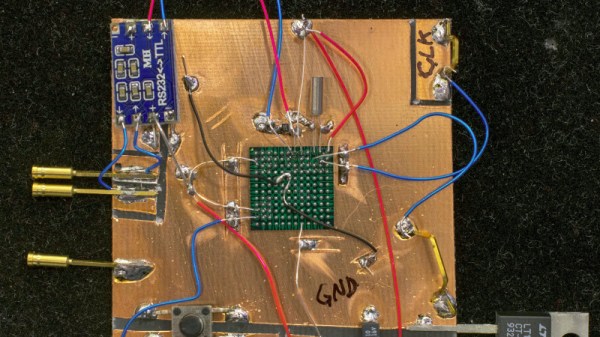68000 microprocessors appeared in the earliest Apple Macintoshes, the Commodore Amiga and Atari ST, and the Sega Genesis/Mega Drive among other familiar systems. If you were alive during the 16-bit era, there is a good chance that you will have owned a Motorola 68000 or one of its derivatives in a computer or game console. By the end of the 1990s it was clear that the 68K line had had its day on the desktop, but a new life for it at the consumer level was found in the PDA market. The first Motorola Dragonball was a 68000 series system-on-chip, and it was a few of these in a BGA package that [Plasmode] had in stock after ordering them in error believing them to be in a different package.
The Dragonball 68328 has an interesting bootstrap mode allowing it to run with no external ROM or RAM, and with only a serial connection to the outside world. Recognising this as having the potential for the smallest possible 68K system, he proceeded to make it happen with some impressive soldering direct to the solder balls of an upturned BGA package.
On a piece of PCB material are simply the 68328, a 32.768kHz crystal and capacitors, a MAX232 circuit for an RS232 serial connection, a reset button, and a power regulator. Using the Motorola DOS debug software which is still available for download after all these years, he was able to connect to his tiny 68K computer and run code. It’s not entirely useful, but of all the possible 68K configurations it has to be the smallest.
This isn’t the first minimal computer using only a processor chip and serial link, in the past we’ve shown you a PDP-11 in the same vein.











